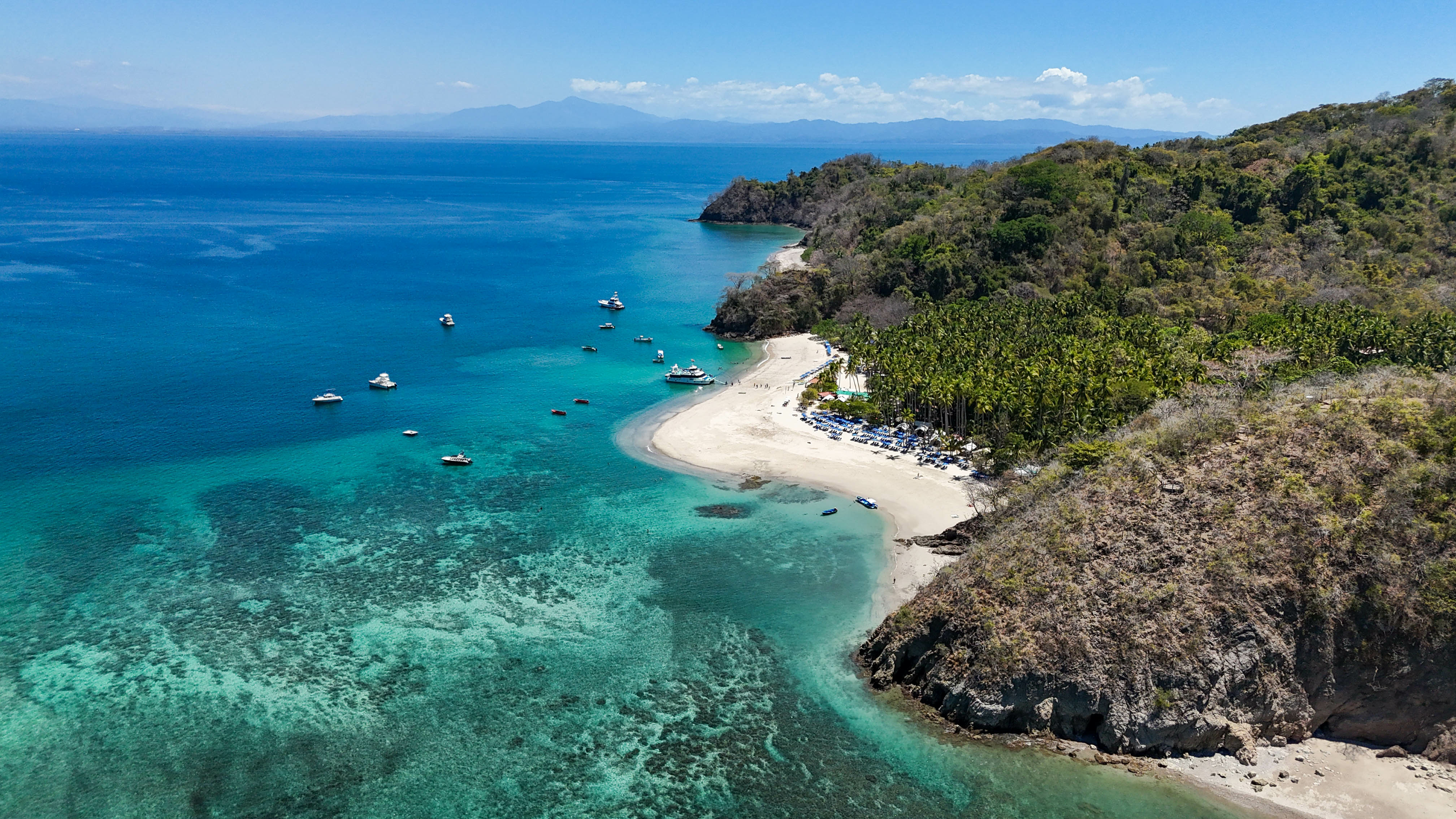
I’d been all over Costa Rica, but the Nicoya Peninsula had remained under my radar.
That changed when I heeded some frequently heard advice from fellow travelers:
You’ve got to check out Nosara.
The renowned surf-spot-turned-yoga-and-wellness-enclave has become a popular destination within this sparsely populated region, offering something increasingly rare: authentic Costa Rican living combined with often-empty beaches.
As Jason Holland writes for International Living, “Some stretches of coastline in the most rural parts of the peninsula are nearly deserted — you could have a beach all to yourself.”
Unlike the busy north and central Pacific coasts, this may be where the real pura vida lifestyle thrives. Plus, it’s one of the world’s five Blue Zones, known for extended longevity.
The Journey Itself Tells the Story
Getting to Nicoya requires a commitment that surprised me.
It’s 80 miles from Daniel Oduber Quiros International Airport in Liberia to Nosara, and the pavement quickly turned to bumpy dirt with narrow bridges and imposing river crossings.
While there is a main highway that runs the length of the peninsula up to Tamarindo and Playa Flamingo, dirt roads lead to all the coastal communities you want to experience. Some of the river crossings lack bridges entirely, becoming impassable during the rainy season.
These challenges keep development at bay and maintain the region’s authenticity. But at the end of the journey is your reward.
A Tale of Three Beach Towns
Each community along the coast maintains its distinct personality:
Nosara attracts an eclectic international mix. Holland describes it as a haven for “surfers, yoga enthusiasts, and practitioners of alternative health and wellness of dozens of nationalities.” The original fishing village is now surrounded by forest-covered development, with no large hotels or tall condos disrupting the natural environment. Sea turtle nesting sites along much of the shore are protected by wildlife refuges.
Montezuma captures the essence of transformation. This former fishing village now features “small seafood restaurants overlooking a quiet cove, with fishing boats anchored just offshore.” Expats have settled in the sharply rising hills, enjoying spectacular Pacific views while participating in the village’s Saturday farmers’ market.
The twin towns of Mal País and Santa Teresa offer a fascinating contrast. Mal País remains a working fishing village, and most residents are still working-class tico farmers and fisherman, while Santa Teresa has evolved into an expat haven and tourist destination with restaurants, surf shops, and boutiques lining the beachfront dirt road.
Sámara: Where Quiet Meets Community
While I found Nosara interesting and a great place to hang out for a while, it didn’t appeal to me as a place to settle.
The American expats who started yoga and wellness businesses, many from my current hometown of Boulder, Colorado, had created an exclusionary vibe that separated them from local Costa Ricans. I find this unattractive, and tensions had already developed because of it.
Perhaps the most intriguing spot in Nicoya for me is Sámara, a beach town protected by a coral reef that calms the waves and creates excellent snorkeling conditions. As Holland notes, “It’s low-key. Bohemian. Tank tops and board shorts are the preferred dress.”
My feelings about the town echo Louise Tangri’s story. Louise and her husband chose Sámara specifically because:
It is still a typical Costa Rican beach village. There are lots of Ticos (Costa Ricans), and they are very friendly and welcoming.
They found property on a hilltop offering ocean views from every window, worked with local contractors, and built their dream home. Louise now volunteers to help sterilize stray dogs and embraces the local way of life, offering advice worth heeding:
Install the pause button. Put your brain on pause. And never judge the local way of life. Embrace it, instead.
Tough advice for your typical American consumer addicted to convenience. But for the right person, it’s the path to peace of mind.
Living the Blue Zone Lifestyle
What makes the Nicoya Peninsula special isn’t just its natural beauty. It’s the lifestyle that National Geographic identified as contributing to remarkable longevity — “a seafood-rich diet and a low-stress pura vida life with an emphasis on family.”
This isn’t a region trying to be something else. It’s a place where fishing boats still pull up on pebbled beaches, where roads wind through green-covered hills, and where the daily catch comes straight from the ocean to your table.
For those seeking authentic Costa Rican living, the Nicoya Peninsula delivers. It’s a chance to experience a place that hasn’t been packaged for tourist consumption, where the old ways still determine the pace of life.
